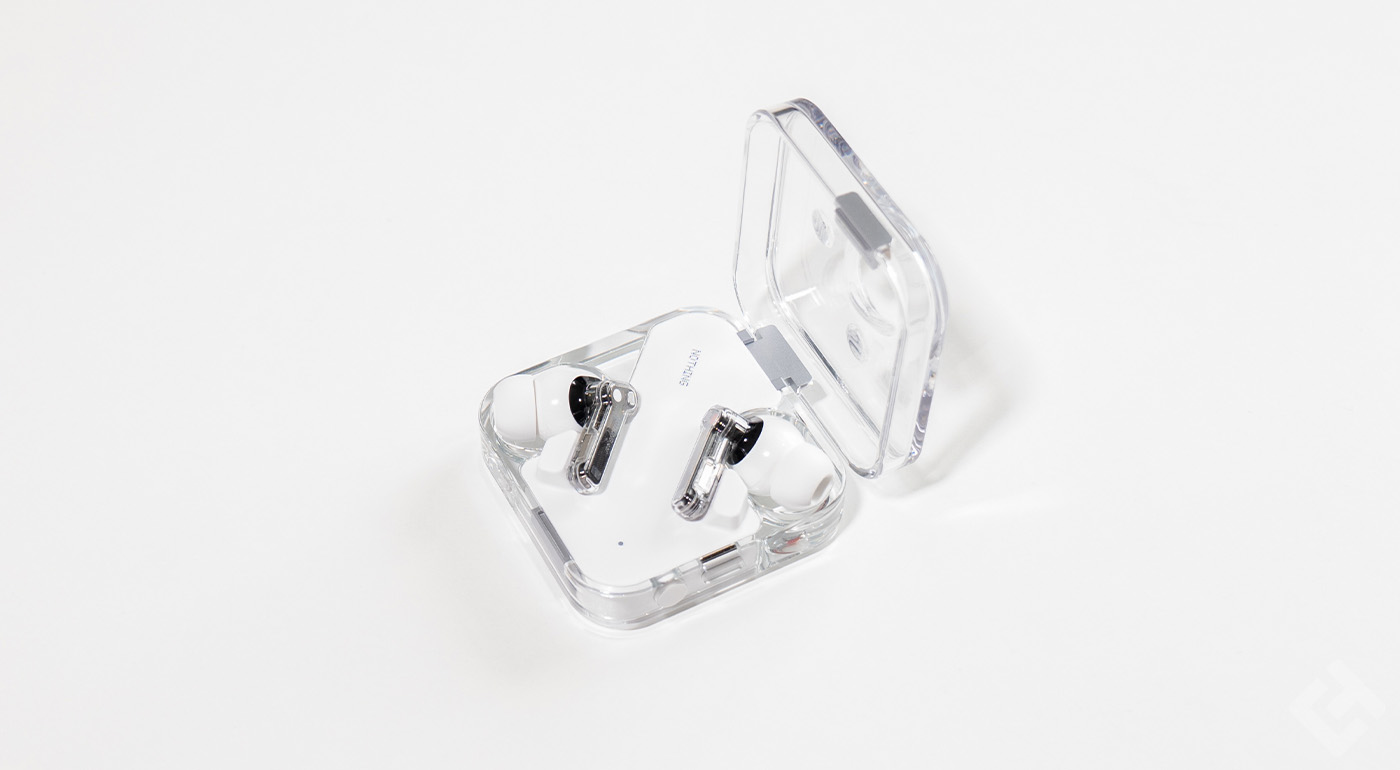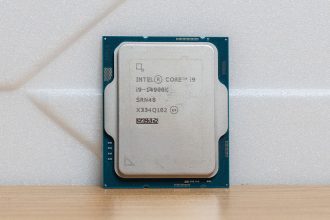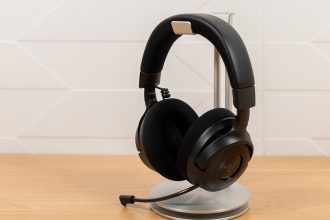We’ve been hearing about them for a while now, and I’ve finally got my hands on the Nothing Ear. If you’re a fan of the brand, you’ll have noticed that, unlike the Nothing Ear (2) or the Nothing Ear (1), these earphones have no name behind them, unlike the previous models.
The Nothing Ear earphones follow the brand’s second generation, with more improvements in hearing quality than in design, as you’ll see in this review.
Nothing Ear design
As mentioned in the introductory paragraph, Nothing has in no way reinvented the design of the Nothing Ear, which looks exactly the same as the previous generation, apart from a few details.
Personally, I don’t mind, but it’s a shame to see that there’s clearly been no work done in this area. Nevertheless, I’m going to present them to you in detail.
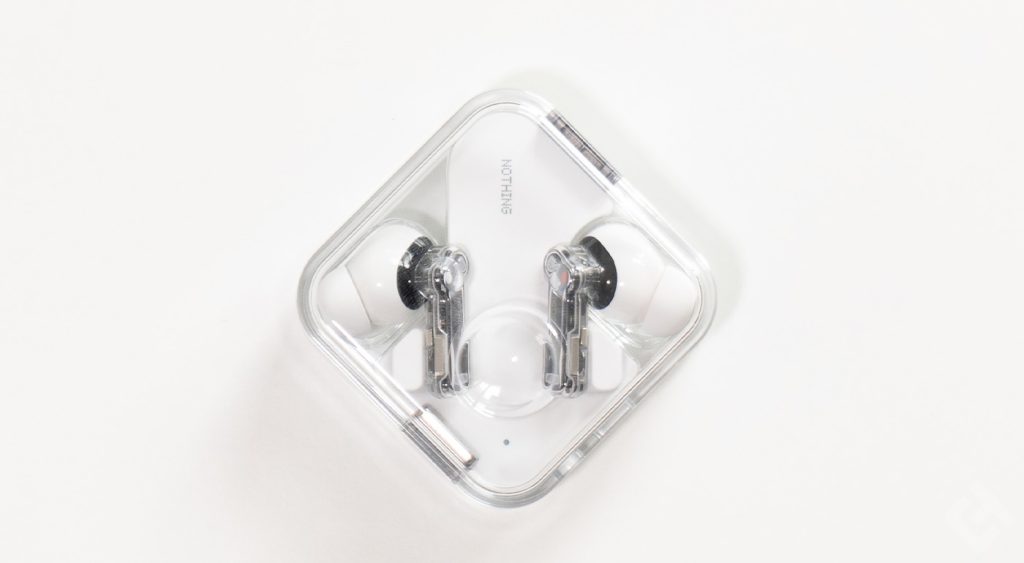
The case containing the earphones is as transparent as ever, as is the case with all the brand’s products. The fact that the plastic in question is solid, thanks to the earphones and the white part reminiscent of their model, gives the impression that it’s made of glass.
Despite the continued use of plastic as a material, the result is truly impressive. In particular, under the case, where the earphones are placed, the concavity creates a magnifying glass effect with a few light diffractions, which I find aesthetically very pleasing.
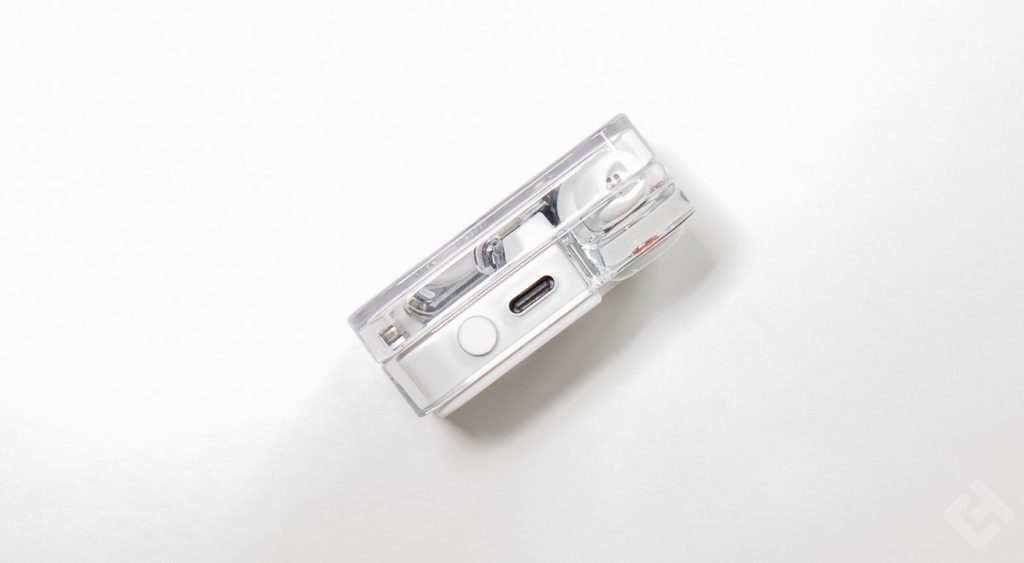
The illusion given is that of a solid glass object, with a few bubbles inside. A less poetic comparison would be that of the bottom of a particularly elaborately designed glass, with a few intentional distortions.
As with the previous version, the case opens from the top, proudly displaying the earphones. Its function goes far beyond that of simple recharging; it truly acts as a small case that displays and enhances the product.
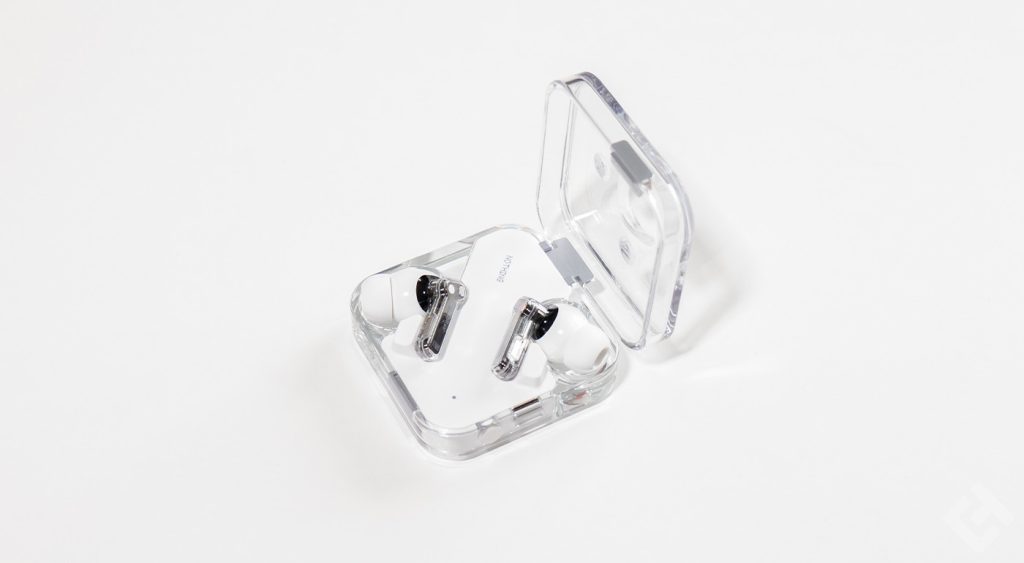
Inside the case is an opaque white plastic element containing various components such as the microcontroller and battery. Unlike the plastic chassis, it is not fully integrated, but protrudes slightly from it. Its texture, distinct from the rest, creates a very interesting visual and tactile effect.

Let’s move on to the earphones. Visually, they’re almost identical to the previous generation. In fact, personally, I can’t see any noticeable difference from the Ear (2).
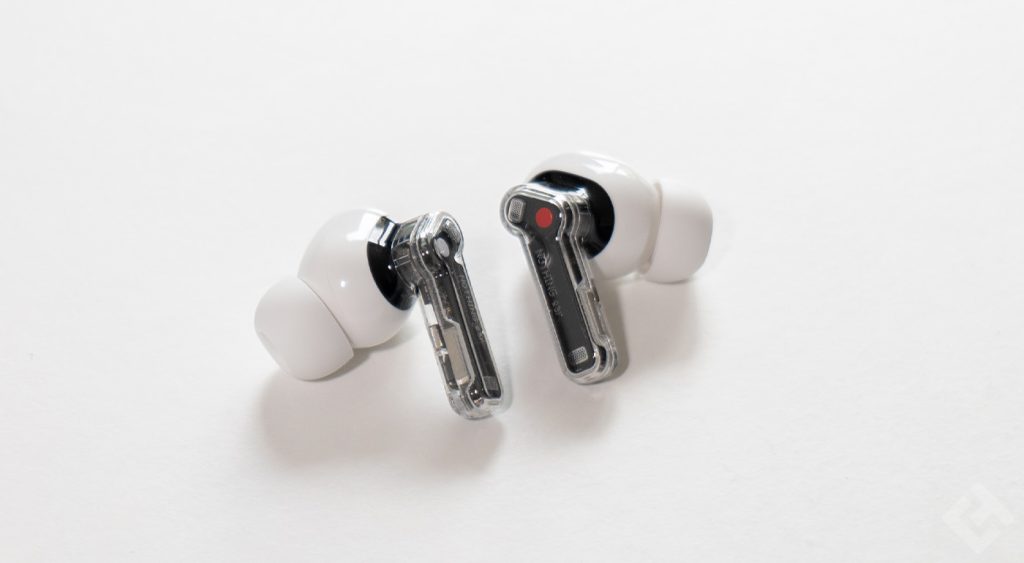
Indeed, the size remains unchanged, at least at first glance. The recharging connectors are positioned in the same place, allowing the Nothing Ear to be recharged using the Ear case (2).
Nothing Ear features
| Model | Nothing Ear |
| Earphone type | Bluetooth True Wireless |
| Connectivity | Bluetooth 5.3 |
| Codec | AAC, SBC, LHDC 5.0, LDAC |
| Waterproofing | IP55 |
| Earphone dimensions |
|
| Case dimensions |
|
| Frequency range | N/C |
| Controls | Pressure |
Nothing Ear sound quality
As I said earlier in the article, while the design of these headphones has changed very little, if at all, the improvement is felt above all in their sound quality.
To begin with, I’ve noticed a very advantageous transducer space. The reason I say this is that the space available allows them to deliver a much less muffled sound. As a general rule, the more air space a transducer has, the better its performance. This also means a wider sound output.
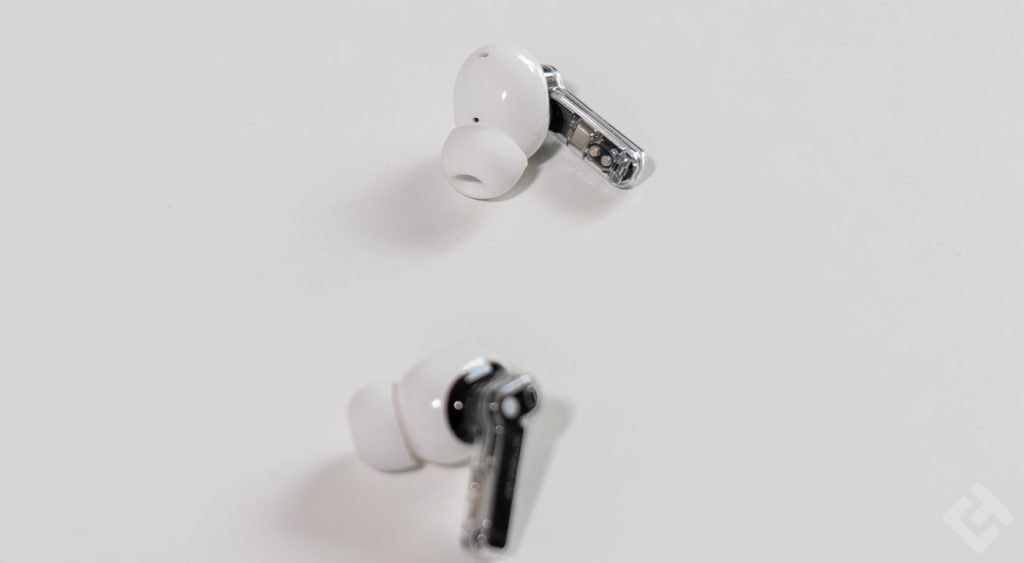
For my part, I confess I was somewhat taken aback by the quality offered by Nothing Ear. A quality that was already present on the Nothing Ear (2). Indeed, their sound quality is almost analytical. High frequencies are rather accentuated, without becoming strident. Midrange frequencies have also been raised to offer a more faithful profile.
I was particularly surprised by the quality of the bass. In the audio world, it’s common to emphasize bass to give consumers the impression of better sound quality. If Nothing has indeed added bass to this model, it has been done with subtlety and finesse.
The bass is powerful, but does not dominate the rest of the sound profile. They add dynamism to the music without drowning out the other frequencies. In my opinion, it’s the right balance.
As for the volume output from these headphones, it’s really high. I’m used to turning the volume up to almost the maximum with other audio devices, but here I barely turned it up more than halfway. So I concluded that it was quite satisfactory.
Comfort of use
In terms of ease of use, I’m not at all disappointed here either. The Nothing Ear offer something very similar to the previous generation, to put it plainly. These are in-ear headphones that don’t dig deep into the ear, but just enough to provide passive isolation from outside noise.
Although there hasn’t necessarily been any change in this respect, I’m not dissatisfied, given that comfort was already present on the Nothing Ear (2). Three sizes of ear tips are included, with the M size pre-installed. Nothing now offers a tool for checking whether the size of ear tips used is optimal. This is crucial if you’re looking for the best possible cancellation of ambient noise.
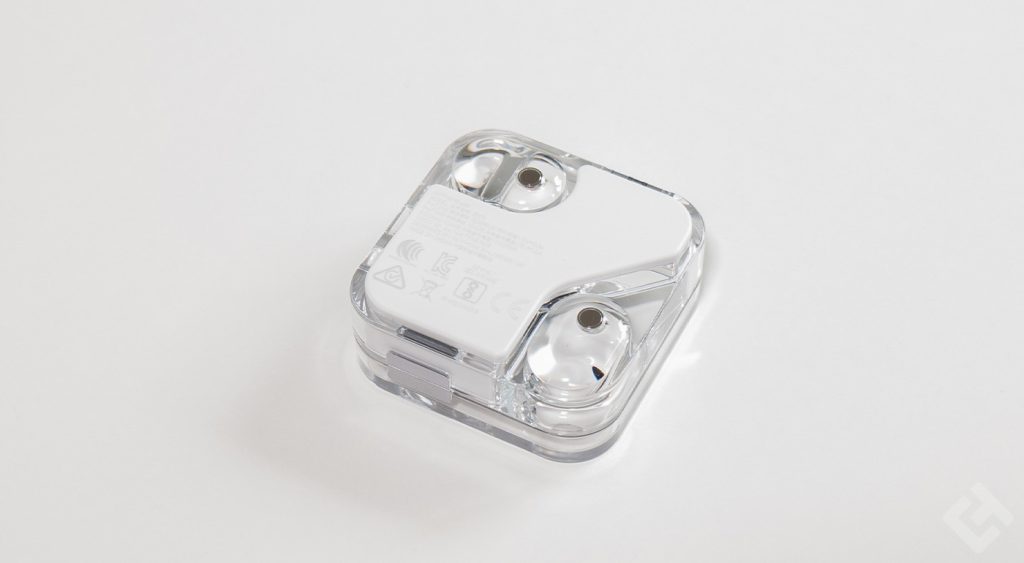
The earphones are lightweight and don’t protrude beyond the ear, which means they can be used for long periods without any particular discomfort. In my case, they didn’t slip out of my ears, which is quite surprising as I often experience this with this type of earphone, but as every ear is different, I can’t guarantee anything.
Nothing Ear features
Like Nothing’s other headphone models, the Nothing Ear comes with a number of features, similar to the Ear (2), although here they are perhaps slightly more advanced.
Among these, we find the rather “classic” features, since all wireless earphones are equipped with them these days. So there’s ANC, a “transparency” listening mode, bass boost, sound equalizer and more.
ANC mode
The ANC mode, which stands for “Active Noise Cancellation” , lets you isolate yourself in your own bubble and no longer hear surrounding noise. This mode was already very effective on the Ear (2) and is even more so on the Ear.
As with its predecessors, the Nothing Ear features four different modes:
- High mode, the most aggressive, for maximum attenuation of ambient noise.
- Medium mode, a compromise between efficiency and preservation of sound ambience.
- Low mode, designed for low-noise environments.
- Adaptive mode, which automatically adjusts the noise reduction level according to the ambient noise level.
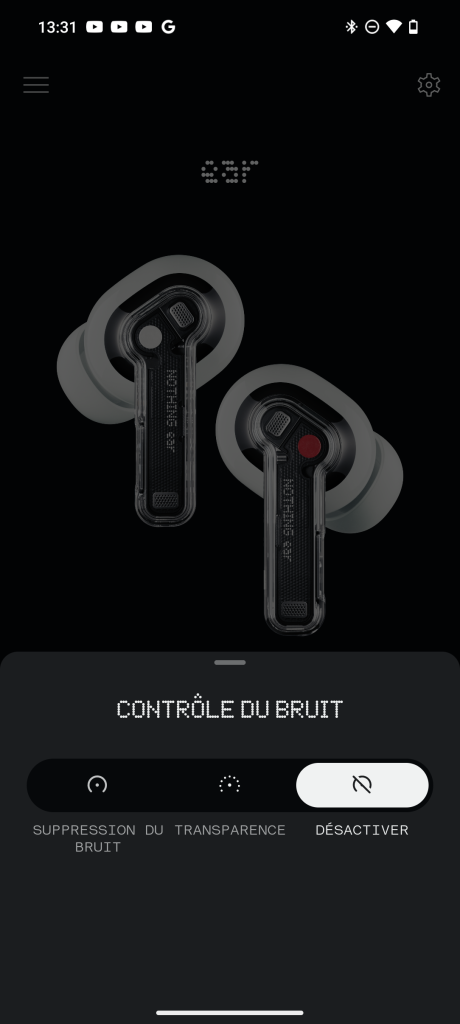
Transparency mode
Unlike ANC, transparent mode amplifies ambient noise. It’s a handy feature that makes it easier to follow a short conversation without removing the earphones.
Nothing Ear’s transparent mode is very powerful. Although you can still recognize that it’s sound captured by a microphone, the rendering is more natural than that of the Nothing Ear (2), which was already very good.
What’s more, Nothing has slightly boosted the mid-high frequencies. This improves speech intelligibility in conversation.
Dual connection
Like the Nothing Ear headphones (2), the ones I’m testing today offer the option of connecting to two devices simultaneously. This option must be activated via the Nothing X application, and requires a restart of the earphones.
It’s important to note that the headphones don’t play sound from both devices simultaneously. However, they are able to switch automatically and intuitively between the two devices.
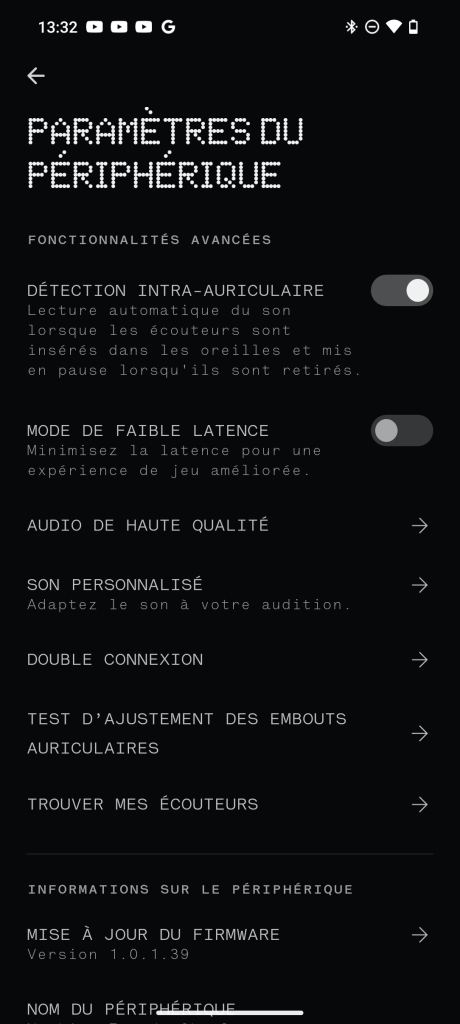
For example, if you stop the music on your first device and start a video on the second, the headphones will automatically connect to the second device. There may be a slight latency, but nothing too long, and above all, nothing that can’t be improved in future updates.
In my tests, switching from one device to the other always went off without a hitch. The mode is reliable and doesn’t switch from one device to another for no reason. What’s more, if your first device is already emitting sound, the headphones won’t automatically switch to the second device for a notification or if you accidentally start playback.
Nothing Ear battery life
As far as autonomy is concerned, it’s supposed to be significantly improved over the other models offered by the brand.
In fact, the manufacturer claims 7.5 hours of continuous listening without the activated ANC, compared with 6.3 hours for the Ear(2). If the box is also fully recharged, you can expect to use them for 33 hours straight.
Nothing’s predecessors offered 36 hours with the case. This slight drop can be explained in particular by the integration of fast charging, theoretically capable of restoring 10 hours of autonomy to the case in just 10 minutes, which is pretty impressive.
As far as I’m concerned, my continuous use of the headphones has given me more or less the same results in terms of hours of autonomy, so the brand hasn’t lied, or at least extrapolated as is the case most of the time.
In terms of autonomy, I have nothing to complain about. You won’t need to recharge the Nothing Ear case every day, and on top of that, you’ll be able to enjoy the headphones throughout a trip, without having to be interrupted by the lack of battery power.
Nothing X application
Nothing Ear is accompanied by the Nothing X application. This lets you manage all the functions and settings associated with the earphones.
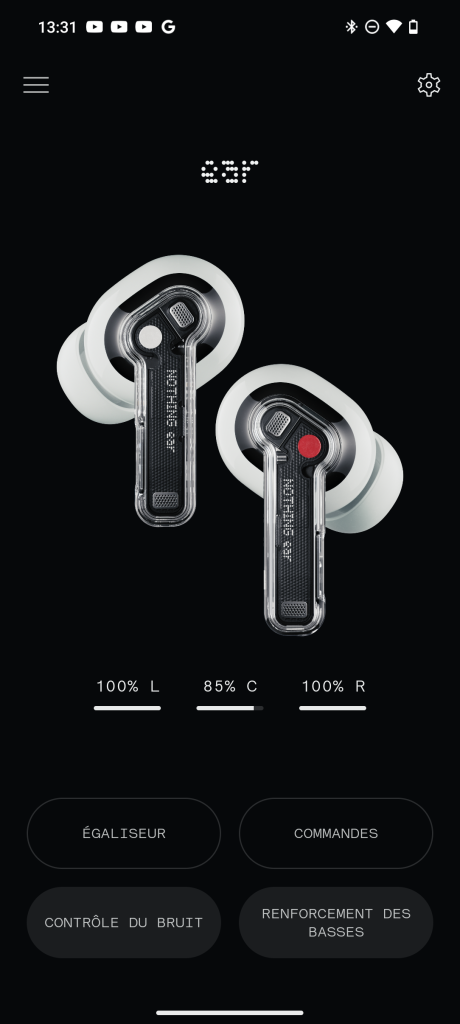
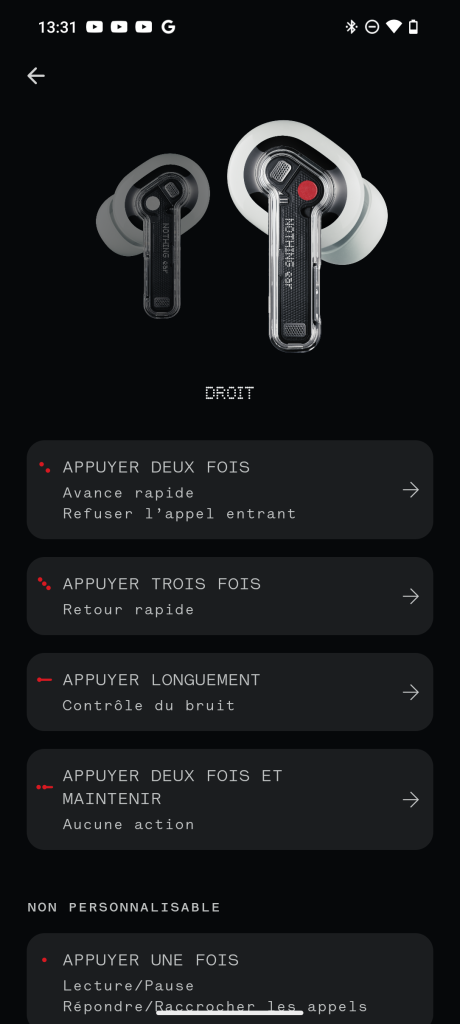
The app doesn’t require you to create an account to use it, which I really appreciate. We’re changing our smartphones less and less often, so it makes little sense to save your settings in the cloud.
The application’s interface is pleasant to use. All the menus are self-explanatory and easy to understand, and the various functions are well explained, even the more technical ones.
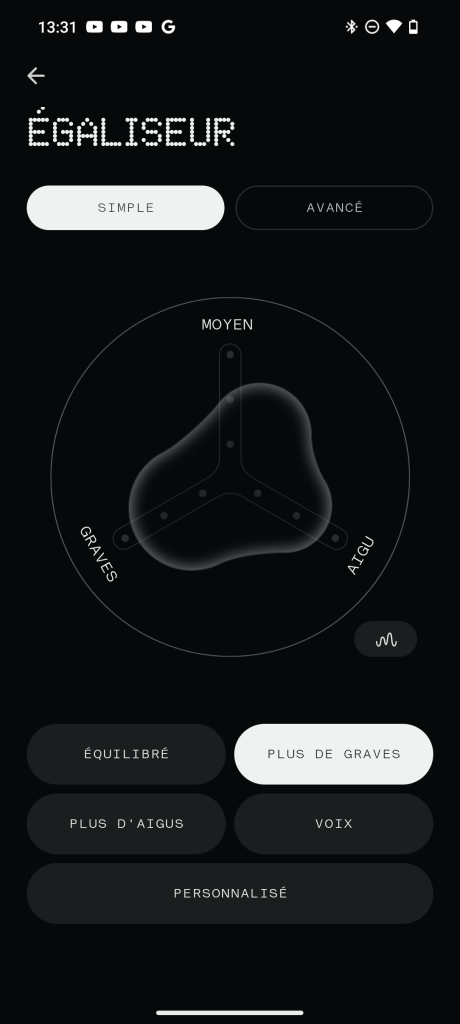
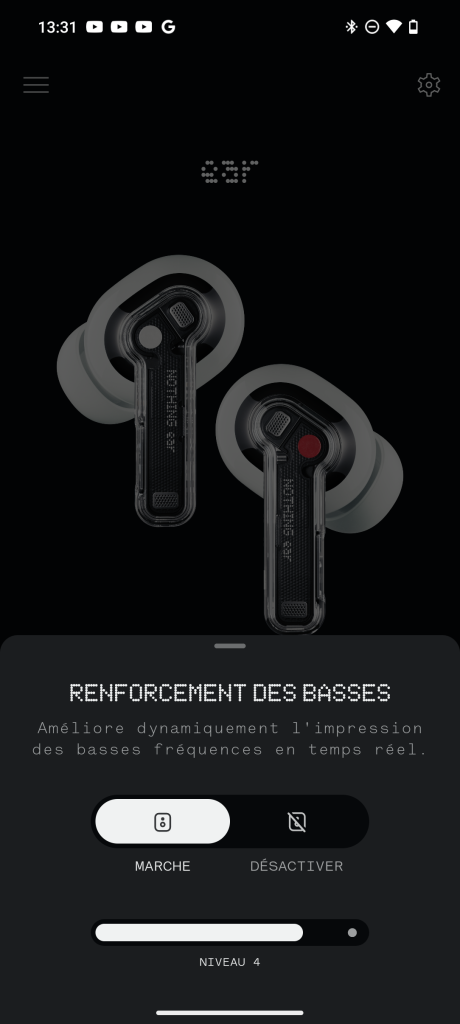
The application features a three-band equalizer, represented as a circle with three points corresponding to low, mid and high frequencies. I would have appreciated the presence of a “pro” mode offering more bands for more precise adjustment.

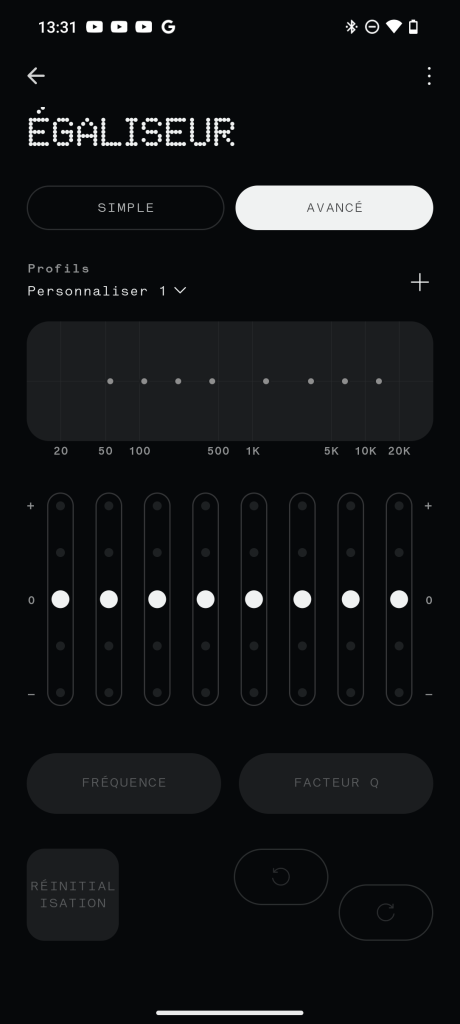
In the end, although the application is not indispensable, its light weight of less than 100 MB makes it discreet on your smartphone. What’s more, it lets you perform firmware updates, which is very important.
Nothing Ear : Opinion
Personally, I find these Nothing Ear earphones to be very good wireless headphones, and at a reasonable price given their unquestionable quality. The previous generation was already very convincing, and here even more so.
Although the design doesn’t really change, I could feel the improvements in terms of listening to music, but also to video content. What’s more, the ANC is even more powerful, and the functionalities are advanced and well thought-out.


